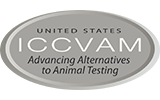Toxicokinetics tools to connect metabolism and variability
Chemicals that enter the body are metabolized via several pathways. Rates of metabolism can vary across human populations due to genetic variability of metabolic enzymes, such that some populations are more sensitive to effects of parent chemicals or metabolites. Risk assessors apply PBK models to predict the dynamics of tissue concentrations for parent chemicals and their metabolites, but it is difficult to use these models to characterize the effects of enzymatic pathway-related variability. NIEHS scientists developed a generalized workflow to incorporate pathway-related variability for specific metabolic enzymes across human populations into PBK models. The workflow includes metabolite structures generated using SimulationsPlus ADMET Predictor®, PBK models from EPA’s httk package, estimates of interindividual enzyme variability from European Food Safety Authority reports, and parameter predictions from OPERA (v2.8). Parent chemical dynamics were simulated following initial exposure, and the amount of parent metabolized was scaled by percent yield to provide an intravenous time series for metabolite models. Ranges of parent and metabolite concentrations were estimated by Monte Carlo sampling of enzymatic variability in intrinsic clearance. A case study to demonstrate the utility of the workflow used 10 parent chemicals and their metabolites, and efforts are ongoing to incorporate additional chemicals. In quantifying the range of tissue concentrations resulting from metabolic pathway variability, this work facilitates a more health-protective risk assessment for susceptible population groups. The case study was described in an oral presentation (Hull et al.) at the 12th World Congress on Alternatives and Animal Use in the Life Sciences.



